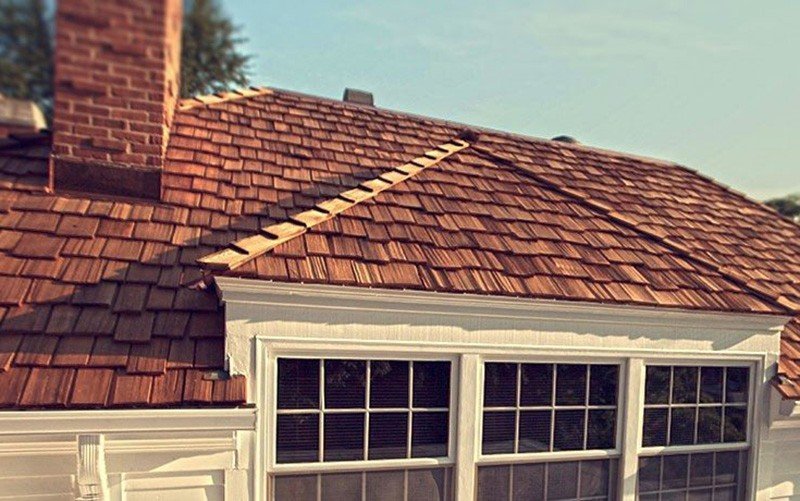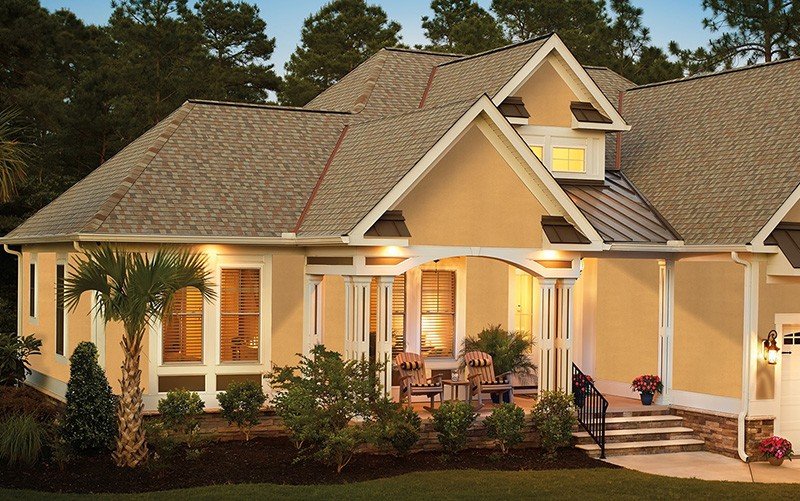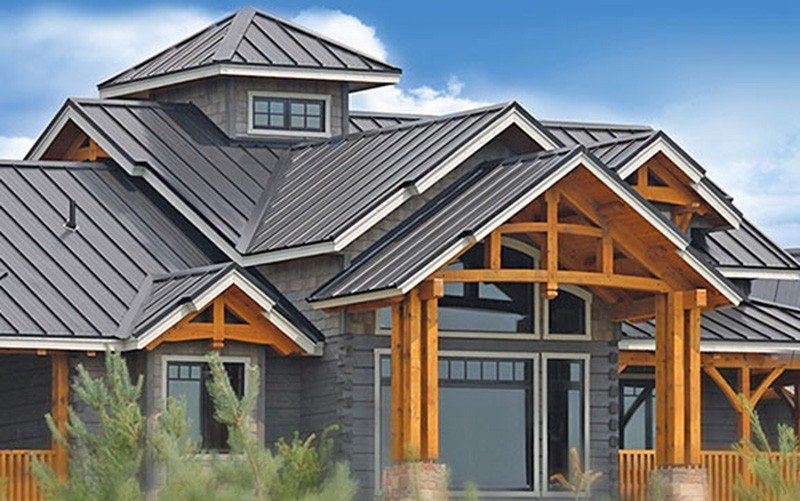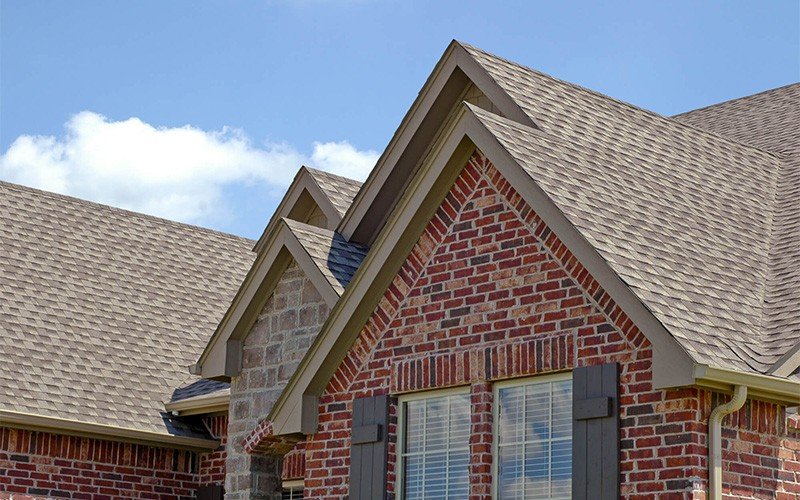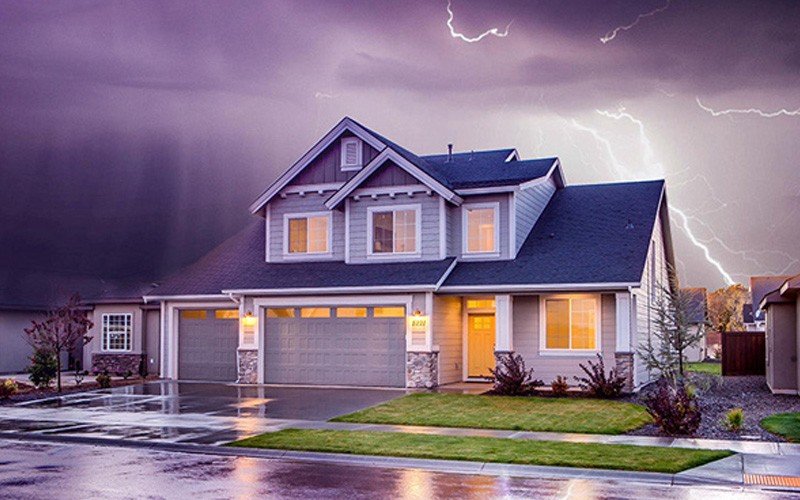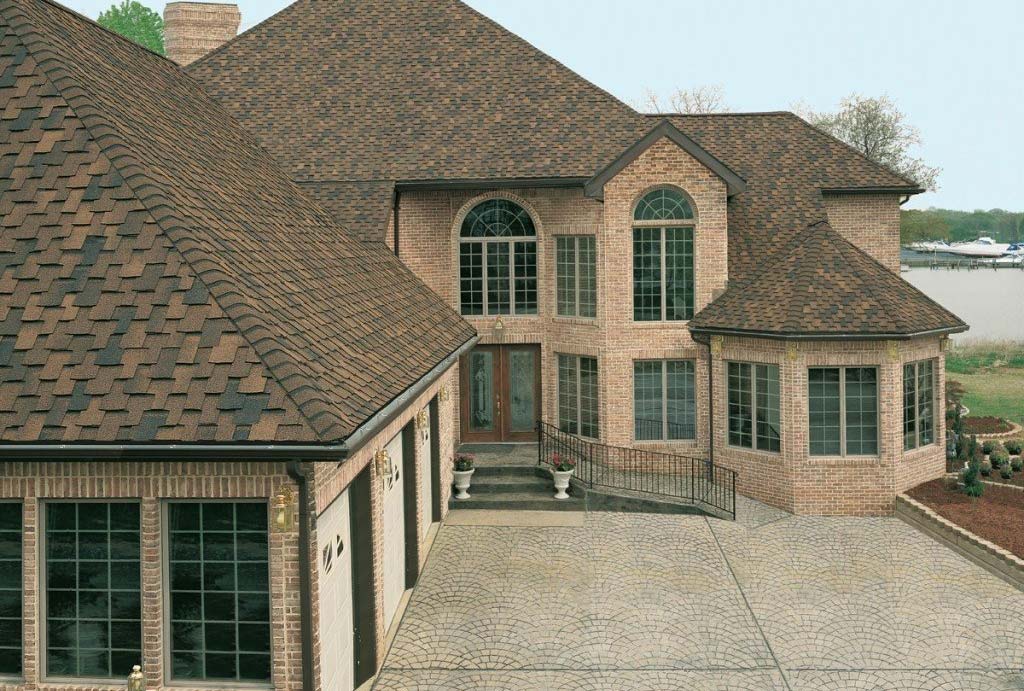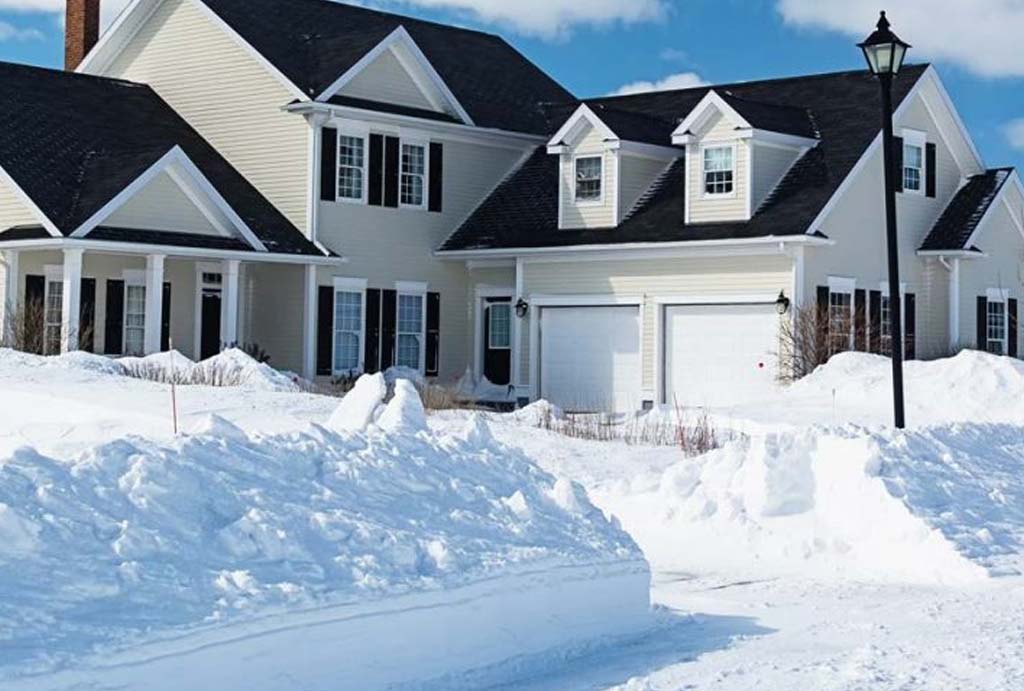RESIDENTIAL ROOFING YOU CAN RELY ON

SCHEDULE YOUR HASSLE FREE INSPECTION TODAY
By submitting this form, I consent to receive transactional messages from Stay Dry Roofing related to my account, orders, or services I have requested. These messages may include appointment reminders, order confirmations, and account notifications among others. Message frequency may vary. Message & Data rates may apply. Reply HELP for help or STOP to opt-out.
RESIDENTIAL ROOFING YOU CAN RELY ON
We proudly serve everywhere in Indianapolis and the surrounding communities with a 100% customer satisfaction guarantee.




SCHEDULE YOUR HASSLE FREE INSPECTION TODAY
By submitting this form, I consent to receive transactional messages from Stay Dry Roofing related to my account, orders, or services I have requested. These messages may include appointment reminders, order confirmations, and account notifications among others. Message frequency may vary. Message & Data rates may apply. Reply HELP for help or STOP to opt-out.
RESIDENTIAL ROOFING
Basic Types of Roofing, Benefits, and Costs
Your roof has an expected lifespan and there will come a time when it will have to be replaced. Yet roofing is not one of the most attractive remodeling projects. It can also be quite expensive to replace your existing roof, most homeowners look forward to doing it within budget and with as little hassles as possible. There are many roofing options that come with varying price tags; some are pricey while others some are quite affordable. If you eliminate factors such as labor, location, and season, you can get to understand the full implications and cost of materials.
Asphalt roof shingles are the most common in the market. They are more affordable than most options you can find today. However, the prices of asphalt roofing tend to fluctuate with the price of oil since they are made from materials derived from petroleum. This article sheds light on different roof material types, cost and durability of these materials, as well as any information that will allow you to pick the best roofing for your home.
Why People choose us!
When Choosing From Area Roofing Services Companies, Choose Stay Dry Roofing
When it is time for replacing your roof, look to Stay Dry Roofing, one of the oldest and best roofing companies in the Greater Indianapolis area. We’ve served Indianapolis and the surrounding communities for over 30 years. Our pros are experts in every type of roof material, and are uniquely qualified to help you choose the best roofing material for your home, whether shingle, metal, the latest energy-efficient products, including Asphalt Shingles, Energy Efficient Shingles, Metal Roofing, And More!
RESIDENTIAL ROOFING
Explore Our Residential Roofing Services
With over 30 years’ experience, we know every kind of roof and roof material, including asphalt & asphalt fiber glass shingles, composite, metal or rubber roofing, and every type of pitched roofing and flat roofs. Making the right choice among roofing companies is every bit as crucial as making sure quality materials are used for your roofing services.
Stay Dry Roofing
Why Choose Us Over Other Roofing Services Companies
Unlike some roofing companies, Stay Dry Roofing is a full-service roofing contractor. We have specialists in every aspect of roofing services, including new roof installation, roof repairing, maintenance and full roof replacement. No matter the kind of roofing material or system, our quality workmanship is 100% satisfaction guaranteed. We have a long-standing reputation of excellence when it comes to customer service, and we maintain that reputation with long-lasting, quality roofing services.
Sure, we’re in the roofing services business. But we never forget the reason why we’ve outlasted so many other roofing companies: You! We value our long lasting relationships with our customers, not just because it’s good for business, but because it’s the right way to do business. Our 100% satisfaction guarantee keeps us on our toes. Our experts listen to you first before crafting solutions that fit your specific roofing needs, using the best products and systems, all while respecting your budget.
Trust the Stay Dry Roofing Experts
Low-Cost Residential Roof Type
Asphalt is the most common roofing material that is used in approximately 70% to 80% of American homes. It is readily available and inexpensive and they are the material most homeowners think of first when they are looking for roofing materials.
Not only are composite shingles affordable, they are also easy and less costly to install. They can also be quickly removed making replacement of these shingles easy and affordable. You can also add a layer of shingles instead of tearing down your roof.
The shingles are made of base materials such as fiber glass with a layer of granules to cover it. These granules can deflect UV rays which reduce the heat burden on your home. They come in a wide variety of styles and you can always find something to boost your curb appeal based on your preferences.
The main disadvantage with this type of roof is that it cannot handle an impact very well. If a tree or branch falls on it, they will crack and cause leaks. This also happens in case there are strong winds or hail stones.
You can get different roof shingle types with 20 to 30-year warranty which is the life expectancy of this roof style. It is ideal for most residential applications. If you intend to stay in your house for longer than two decades you should consider factoring in a replacement for your roof when the time comes.
The average cost of installing asphalt roofing in a house of 2500-square-feet is between $2,000 and $6,000. The cost may vary depending on the number of layers you have. Your roofer will charge you for removing the old roof and this could be between $100 to $150 for a single layer and between $120 to $170 for two layers.
Roll roofing is one of the best options when you are looking for something that is easy to install and also affordable. It is one of the roof styles that can be installed by homeowners and DIY enthusiasts. Asphalt shingles can be difficult to transfer from the ground to the roof because it is dangerous and you risk damaging the materials. Roofing professionals have tools like cranes that allow them to easily lift the materials. With MSR homeowners can easily lift the rolls without using these machines.
It is suitable for a low pitched but not a flat roof. Homeowners often do not use roll roofing on their primary home choosing to use them on garages, sheds, and other surrounding buildings instead. They are not very durable and they respond poorly to stress or temperature fluctuations. It has a lifespan of between 5 and 8 years.
The average cost of materials for the 1200-square-foot area is approximately $970. They are suitable for any homeowner looking for a short term low-cost roofing option or for the low pitched buildings around the home.
Types of Roofs and Costs
Medium-Cost Residential Roof Type
There are many different metal roofing materials for you to choose from. They range from zinc, aluminum, and tin, to copper and galvanized steel. The different metal roof types available today can be two or three times more expensive than the more popular options such as asphalt shingles. However, they have many advantages such as durability, energy efficiency, and longevity.
Asphalt is a cheap option but metal roofing materials can last between 40 and 70 years. They perform very well against strong winds and can withstand stress from gusts moving at 140 miles per hour. They are also durable because they don’t provide food for pests and insects.
Metal roof types are also one of the best options if you are looking for materials that are energy efficient and eco-friendly. They reflect light and statistics show that they can reduce your home’s energy cost by up to 25%.
Many manufacturers still do not have the capacity to recycle asphalt shingles despite some recent technological advances. On the other hand, metal roofs last two or three times longer and are 100% recyclable.
Since there are many options available from copper to zinc the prices may vary considerably. For installed metal roof you can expect to pay between $5 and $12 per square-foot. However, the type of metal used and your location are some of the things that may influence metal roofing material costs.
Wood shake is another roofing type that is beautiful and each unique. The patterns and colors on this types of roof are so distinct that you can be sure that it won’t be similar to your neighbor’s with the same type of material. If you want to boost yur curb appeal with a roofing type that is not costly, wood shakes are amongst the best option.
The other advantage is that they are durable. They have a lifespan of between 30 to 40 years which is a decade or two more than the average asphalt roof shingles. Wood is more eco-friendly; it can be easily recycled and requires a smaller carbon footprint to manufacture.
Despite these advantages, there are a number of drawbacks that homeowners need to note. It is three or five times more expensive than asphalt but lasts 10 to 20 years longer. They require regular maintenance to prevent pests and insects. If you replace some of the wooden shakes, the new ones may not much the color of the old ones and this may have a considerable impact on its aesthetic value.
You can expect to pay between $6 and $9 for wood shakes. Wood shingles are slightly cheaper at between $4 and $8. The price includes installation.
If you are looking for a very durable roof that is also visually appealing you should consider clay tiles. They have a life expectancy of 100 years which is four to five times longer than that of asphalt or wood shingles.
Clay tiles used for roofing today are fired in a kiln. This helps to make it stronger and make their colors permanent. They have a smooth surface and you can find a wide variety of styles to boost your curb appeal. Unlike most other materials it does not crack due to temperature fluctuations.
Another advantage of clay is that it is non-porous and self-cleaning. It requires little maintenance. Its surface is smooth and can reflect UV rays more effectively than both wood shakes and asphalt roof shingles. It can help cut down energy costs considerably.
Clay has a number of draw backs. The first is that it is expensive and difficult to install. It is heavy and requires expertise to handle which raises the installation costs. It costs between $5 and $10 per square foot.
If you are looking for an affordable and durable alternative to your asphalt shingles concrete tiles are the amongst best roofing materials. Concrete is very strong and has a high impact resistance rating. It can withstand strong gushes of winds and hail stones. If a tree or shrub falls on the roof it won’t do as much damage as other types of roof shingles.
Concrete is also one of the best roofing materials if you are living in an area that is susceptible to high-temperature fluctuations. They pass the freeze-thaw test which means that they won’t develop cracks when subjected to extreme weather conditions.
Modern concrete roofs are designed to reflect light back into the atmosphere and can perform better than most shingles when it comes to energy efficiency. Additionally, concrete also absorbs heat. They are not installed directly onto the roof and therefore can provide more insulation to your house or other outbuildings.
However, there are several things you need to note about this type of roof. While it is relatively affordable, it is heavy and this may increase the cost of installation. You need to consult a roofer to ensure that the structure of your home can support it. Concrete is porous and for roofing purposes, it needs to be sealed.
Many homeowners love the exquisite natural look of slate. However slate is heavy, difficult to install, and expensive. Synthetic slate is designed to provide the same beauty without these disadvantages. Synthetic slate can be made of a number of different materials.
Synthetic Slate Roofing Type:
- Plastic polymer: These are made from plastic material
- Clay: Similar to clay tiles but are designed to look like slate
- Rubber: Made from recycled rubber and plastic
- Steel: Steel manufacturers sometimes make steel tiles designed to mimic slate
- Asphalt composition: Though not durable they can mimic slate tiles more convincingly with their unique color and texture
One of the advantages of synthetic slate is that it gives you the visual appeal of slate and is more durable. They have a high impact resistant rated at class 4 and can protect your home in case of storms and hail stones. It is also designed to be fire resistant.
Synthetic slate also solves some of the problems associated with traditional slate. It is lightweight and therefore easy to install. It also makes it easier to install an additional layer of tiles without straining the underlying structure.
You can expect to pay between $7 and $9 per square-foot for a synthetic slate roof. Some materials may not look exactly like slate, but you can still boost your home’s curb appeal at a fraction of the cost without the disadvantages that come with a traditional slate roofing.
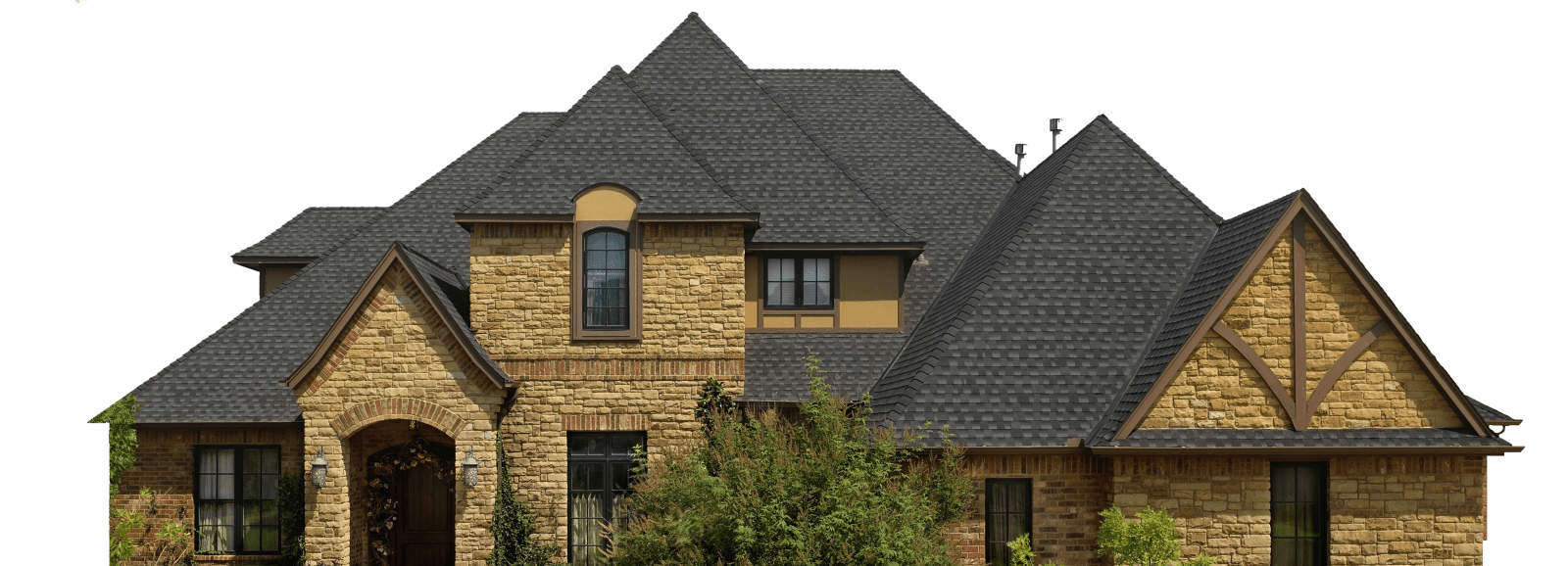
GET ROOF REPLACEMENT AS LOW AS $97.42/MONTH
Types of Roofs and Costs
High-Cost Residential Roofing Type
A green roof is a roof covered with vegetation. It is effectively a raised bed designed to prevent the roots from getting to the underlying structure. It must also have the capacity to drain water away in the case of rainfall or after watering the plants.
This roofing option is expensive but it has many advantages that homeowners may want to consider. It can provide great insulation during both cold and hot seasons. A green roof also absorbs sound and is suitable for homes that are in busy areas such as the city or next to a highway. The plants can also clean up the air around your home.
If you are a homeowner but you have no place to grow plants like herbs and even shrubs, a green roof provides the space. The type of plant you choose to grow will depend on the type of green roof you plan to install.
A green roofing type can be:
- Extensive: Designed for shallow soils and suitable for growing small plants, herbs, and grass.
- Semi-extensive: Designed for deeper soils and roots. You can grow average sized plants such as shrubs.
- Intensive: Intensive green roofs have soils deep enough to support shrubs, large perennial plants, and even trees.
One of the biggest disadvantages with green roofs is that they are difficult and expensive to install. The house needs a strong structure to support the plants. The cost will depend on your location and which type of roof you want. Consult a professional roofer to advise you on the best plants and type of green roofing to install in your area.
If you are looking for roofing options with great aesthetic value and durability slate may be the best material for your home. Slate has been around for some time and is known for its beauty which can boost your home’s value. However, it also has a number of disadvantages such as a high price and is difficult to install.
Slate roofing is made of natural stone which is durable and strong. Some slate tile roofing materials can last for up to 150 years. They are excellent at resisting fire. They don’t need additional coatings like wood shakes or some roofing shingles.
The natural stone has an exquisite gray appearance that is celebrated worldwide. They come in a wide variety of choices to choose from. You can find slates in different colors such as purple, red or black.
One of the biggest problems with slate is that it is heavy. A square foot can be more than 1000 pounds per square. Homeowners will need to consult a professional to determine if the structure of their homes can support slate.
Professional roofers, rather than general contractors, need to be consulted when installing the roof because it requires expertise and special equipment. You can expect to pay about $235 per square minus installation costs.
Copper is one of the oldest materials used for roofing residential homes. It has been used in Europe and the United States since the 18th century. For a long time, homeowners and manufacturers had ignored this roofing material until recently when they started getting popular again thanks to their numerous benefits.
One of the advantages of copper is that it is long lasting. It has a lifespan of about 100 years. However, there are buildings from the 18th century which still have this type of roofing intact. It is resistant to high winds, pest and insect infestations, as well as mildew and fire.
This is one of the most beautiful metallic materials used for roofing. Other types of metals tend to have a bland look. It does not require an extra coating. Its natural color can get better with time as the color changes through several shades of gray and brown. It has an antibacterial effect which kills bacteria and saps their energy which is what is responsible for the color changes.
Like most metals, it reflects light back into the atmosphere and reduces energy costs. Copper can be recycled which makes it an eco-friendly option.
You’ll need a professional roofer to install this roof. One of its drawbacks is that it expands and contracts more than most other types of roofs. It can cause the nails to loosen. It requires proper maintenance and installation. Ideally, it should be installed on a proper frame with the necessary underlayment to buffer it. Otherwise copper causes a lot of noise when it’s raining. Copper is slippery and allows snow to slide down its side. Consult your roofer about installing snow guards on the edges to prevent hazards.
A flat roof is one that is laid horizontally but can have a slight slope. More homeowners are now considering flat roofs for their homes due to a number of important benefits.
Flat roofs are easier to install because they do not complicate roofing tasks. It is also considered to be safer and it is also easier to ensure this type of roofing. They do not rafters and trusses you’ll need in a typical sloped roof. The total area is less than a sloped roof and therefore require less material.
There are also a number of significant disadvantages. They take a lot of beating from heavy rains, winds, hail storms. If you are using flat roofing materials such as asphalt you cannot expect it to last more than 10 years. Because of these disadvantages, it could also have an impact on your home’s resale value.
Stay Dry Roofing
Factors to Consider When Replacing Your Roof
Installing a new roof can be expensive. You need to determine if your roof needs repairs or it needs to be replaced. If you replace the roof too soon, you could be losing money while simple repairs could have adequately addressed the problem. On the other hand, if you fail to repair a roof that has come to the end of its lifespan, it could cost you a lot in damages to the roof as well as the underlying structure.
The age of the roof is one of the factors you need to consider. Asphalt lasts for about 20 years. When the time comes do not wait for damages, consult a professional roofer and consider having it replaced. You also have to remember other factors such as the number of layers you have on the roof will determine when you’ll require a replacement. If you have more than one layer, the lifespan of the roof is likely to be significantly shortened.
Before picking the best roofing materials for your home, determine if they are suitable for the structure of your house and the climate. Some materials such as slate and concrete can be heavy and complicated to install. They require a house with a strong structure to support it. Some materials tend to crack when exposed to temperature fluctuations.
You need to start with a plan. Determine if you can pay the initial cost as well as the maintenance costs that are necessary to keep the roof in its tip-top condition throughout your life and the life of the roof itself. It is equally important to ensure that the roof is installed properly to ensure it lasts and prevent additional expenses needed for maintenance down the road due to poor installation.
Bonnet
Bonnet roofs are more like mansard roofs in reverse. They have double slopes with the upper slope set are a higher angle than the lower one. They are also called kicked-eaves. A bonnet roof is a great option if your house has a porch as the lower slope has an overhang.
Generally, bonnet roofs are seen more in old French Vernacular houses like the ones you see in Mississippi and Louisiana.
Advantages:
- The overhang provides great shade for porches
- The overhanging eaves also keep the walls safe from water damage
- Because this roof type does not trap water, it is more stable and durable than some other roof types.
- Also, the design allows space for an attic or a vaulted ceiling. You could also have side windows or dormers if you prefer.
Disadvantages:
- Because the design is quite complex, it needs more building materials making it more expensive to construct.
- You will also need to waterproof the valley where both slopes meet as it easily pools water and snow.
With bonnet roofs, you don’t need any special material as most any works, including metal, shingles and natural stone.
Butterfly
The butterfly roof has a V-shape and looks a bit like a butterfly in flight. It is made up of two tandem pieces that are placed at an angle on the roof. This is a roof type that is great for eco-friendly homes and has a modern feel.
Advantages:
- It allows for larger windows because of the way the edges are angled.
- Large windows are cost-effective in the long run because it allows natural light into the home.
- Also, there’s a valley in the middle section which stores rainwater. This can be collected into a reservoir for other use.
- Further, it is an eco-friendly design and can house solar panels.
Disadvantages:
- To be honest, the butterfly roof design is a complex one and can be expensive.
- It also accrues more cost because it requires frequent maintenance.
- Again, you would need to take extra care to ensure that the roof is waterproofed.
- This type of roof is prone to leakages if not properly maintained and can lead to structural damage.
- Further, temperature regulation will be a bit difficult in the home because of the large windows and design.
Tips
Now, to keep this roof type watertight, use material without seams. You could also use organic materials or metal. Additionally, solar panels work quite well.
Curved
Think of a Skillion, but instead of a completely flat roof, it is curved. This roof design is unique and mostly seen in modern home designs. It is a creative take on roof design and can be slightly curved or arched. Or, anything between.
Advantages:
- These are beautifully designed roofs with a lot of visual appeals.
- From inside the home, you can also see the aesthetics that a curved roof adds.
- Curved roofs are versatile and can be used for one part of the entire home.
- Also, they can be designed to suit the region where the home is built. This means they can be designed to fit areas with the high wind as well as areas with heavy snow and rain.
Disadvantages:
- Curved roofs can be cost-effective or expensive. It really depends on the design.
Tip:
Naturally, the best material for this roof type is metal. That’s because it is malleable, and requires minimal maintenance.
Dome
A dome roof is shaped like a dome and adds great visual appeal to a home. You could also use them for gazebos, cupolas, or a crow’s nest.
Advantages:
- These roof types are beautiful and add to the aesthetics of the house.
- They are also durable.
Disadvantages:
- Now, the dome roof is a complex type; therefore, constructing it will be expensive. Although, it is possible to get a prefabricated roof, which can be used on the right structure.
With dome roofs, you can use shingles, glass, and metal, though metal is tougher and requires minimal maintenance.
Flat
Flat roofs are well, flat. But they do have a slight pitch, so water rolls off. They are great for most regions and can withstand heavy rainfall.
Advantages:
- Flat roofs are great for extra living space. You can have a roof garden or a patio, or even a penthouse.
- Also, it’s a good place to put your cooling and heating unit.
- Oh, and if you want to install PV solar panels, a flat roof is probably the best place to do that.
- They are easy to construct.
- Flat roofs also require less building materials than pitched roofs, making them cost-effective.
Disadvantages:
- Flat roofs have low pitches, which means there is a higher chance of water leaks.
- They are not the best option for places with high rainfall or snow.
- The costs are higher in the long run because of constant maintenance and repair costs.
Tips
It is important to ensure that the roof is waterproof. Thus any material with seams is not a good option. Instead, use roll roofing, tar, and gravel, TPO, metal sheets, rubber membrane, or PVC.
You can easily convert a flat roof into a green roof, which has great visual appeal and is environmentally friendly.
Gable
Gable roofs are quite popular in the US. It is also known as a peaked or pitched roof and has a triangular shape.
Advantages:
- Sheds water and snow easily
- Provides room for an attic
- Allows space for vaulted ceilings which is great for increased ventilation
- Simple design for the building, which makes it cheaper
Disadvantages:
- Gable roofs are a bit tricky in areas with hurricanes or high wind. They can easily collapse if not well constructed.
- Also, high winds can lift the roof and get it detached from the walls.
Tips for Gable Roofs
Basically, if you’re going to use a gable roof in an area with high wind, use high-quality braces. Also, once a major storm is over, inspect the roof for damage.
Also, using good quality material for covering is important, although, you can use almost any for a gable roof. Examples include metal, asphalt shingles, clay tiles, cedar shakes, or concrete tiles. It’s important to note that for roofs with valleys and hips, use standing seam or metal shingles. This way, you can protect the roof from leaks.
Types of Gable Roofs
There are different types of gable roofs, and the one you use depends largely on the region and type of building. The different types are:
- Crossed Gable
- Side Gable
- Dutch Gable Roof
- Front Gable
Gambrel
A Gambrel is also called a barn roof and is designed like a mansard, except that it only has two sides. While Gambrels are mostly used for log cabins, barns, and farmhouses, they are also used in some homes. Mostly Georgian and Dutch colonial architecture.
Advantages:
- It’s easy to create extra living space such as a loft or garret with a gambrel.
- Also, it’s quite easy to frame out.
- Again, you don’t need a lot of materials since only two roof beams are used. Thus, Gambrel is cost-effective.
Disadvantages:
- This type of roof is not suitable for areas with heavy snowfall.
- The roof style is not designed to withstand a lot of pressure and could collapse.
- Further, Gambrel roofs need constant maintenance, particularly after a heavy snowfall or rain.
- You would also need to add windows for extra light. This could lead to water leaks.
Tips for the Gambrel Roof
Practically any material can be used for the gambrel depending on the style of the house.
If you’re going to use it in a place with extreme weather, ensure that reinforced trusses are used.
Hip
Hip roofs have four sides that slope and are of equal length. These come together to form a ridge at the top.
Advantages:
- These roofs are sturdy and stable.
- They are durable and have a long life.
- Further, they are very good for areas with high winds or lots of snow.
- Because all four sides slope down, water does not stand on the roof.
- Also, it provides room for a crow’s nest or a dormer.
Disadvantages:
- When compared to gable roofs, for instance, hip roofs are quite expensive. Because it uses a complex design, it also makes use of more materials.
- Again, where a dormer is added, water leaks could easily spring up in the valleys. The solution to this is a properly installed roofing system.
Tips for Hip Roofs
If you’re going to use a hip roof, it is important to ensure that it is properly constructed. Also, you would need to carry out regular maintenance so that minor problems don’t escalate.
Interestingly, hip roofs are also quite versatile when it comes to which roofing material you can use. You can use metal, tiles, or shingles for your hip roof.
Types of Hip Roofs
The different types of hip roofs include:
- Cross hipped
- Simple hip
- Half hipped
Jerkinhead
This roof type uses features of both hip and gable roofs. Which is probably why Jerkinhead roofs are also referred to as English hip or clipped gable roofs.
Advantages:
- These roof types are quite stable and so resistant to damage by heavy winds.
- They also provide extra living space, when compared to the typical hip roof.
- They have aesthetic appeal, which could also add to the value of your home.
Disadvantages:
- Jerkinhead roofs are usually more expensive than some other types of roofs, due to their complex design.
Tips:
You don’t have to use any special kind of roofing material for a jerkinhead roof. Almost any material will look good on this roof type.
Mansard
Known as a French roof, a mansard roof has four sides with a double slope on each side. These slopes come together to form a roof with a low pitch with a lower slope that is really steep. There are different types of styles, and it’s not rare to see a mansard roof with curved or flat sides.
Advantages:
- Great for creating extra living space. If you are planning to put a garret or an attic, then a mansard roof is a great option.
- It can be used for dormers, which improves the aesthetics of a building.
- Further, it is flexible and makes home additions easy.
Disadvantages:
- Mansard roofs have low pitched parts, which are not exactly great for areas with lots of snow.
- Also, they tend to cost more than other types of roofs because of the details and additions.
Tips for Mansard Roofs
Basically, a mansard roof is different from other types because the design is unique. Therefore, you need to carefully choose a material that is equally unique to add to the visual appeal. Examples include zinc or copper.
Of course, you could also use slate shingles or wood if you prefer, but a diamond pattern will make it more special. Don’t use composition shingles that overlap. And, be sure to waterproof and properly flash the low slop part to avoid damage.
Types of Mansard roofs
The difference between mansard roofs is in the way the silhouette is arranged. Thus, you could have:
- Straight angle silhouettes
- Convex silhouettes
- Concave silhouettes
Note that extra detailing is often used, such as large windows, decorative cut stone, trim, or wood quoins.
Saltbox
Generally, saltbox roofs are designed in a lopsided way, more like a flat roof that slopes on one end and a lean-to a the other. These roof types are a twist on early colonial designs and were used because they provided more room.
Advantages:
- The slanting design makes it perfect for places with high rainfall because it does not cause water to pool.
- Also, saltbox roofs are durable and sturdy.
- Then, they provide for extra living space because it’s easy to build a two-story home with this roof type.
Disadvantages:
- Although the saltbox roof looks easy, it isn’t, and this complexity means higher costs.
- The odd angle means that the ceiling will be slanted in some rooms.
A saltbox roof can also be made with practically any roofing material.
Sawtooth
The sawtooth is an interesting roof design. It has parallel pitched roofs, which may be two or more. It looked a bit like the side of a saw blade and was common on industrial buildings. Though, it’s not unusual to see them in modern designs of homes.
Advantages:
- This roof design allows more natural light into the home since windows are fitted into the vertical spaces.
- Because there are higher peaks, extra living space can be created or vaulted ceilings.
- The natural light makes this an eco-friendly roof type.
Disadvantages:
- Typical of complex roof designs, this one needs several building materials, which makes it expensive.
- The sawtooth roof requires a lot of maintenance as well, which adds to higher costs.
- Again, water damage is a real problem here with all the windows, slopes, and valleys. So, this is not a good idea for areas with heavy rainfall or snow.
Tip
The materials needed would depend largely on the style of the house. Most times, what is commonly used is steel, wood, or reinforced concrete.
Skillion
A skillion is a single roof that slopes downward. It is called a lean-to or shed roof and usually has one side taller than the other. So, there’s a slight pitch. Typically, they are used for sheds, home additions, and porches. But they are featuring more in modern, minimalist home designs.
Advantages:
- Skillions are easy to install.
- They use fewer materials than other types of roofs.
- Water easily runs off the steep pitch, making them great for regions with high snow and rain.
- They are excellent for aesthetic purposes.
Disadvantages:
- The ceiling may be too low if the pitch is too high.
- Skillion roofs might not be great for areas with high wind.
Tips
For this kind of roof, there’s no need for roofing membranes and rubber skins. Also, standing seam works better than shingles or tiles. Finally, you can install PV solar panels to make it more eco-friendly.
Pyramid
Just like the name implies, pyramid roofs have a pyramid shape with no gables or vertical sides. They are typically used in smaller buildings, like cabins. Also, you can find them in auxiliary buildings like storage buildings, garages, and pool houses.
Advantages:
- Pyramid roofs are very sturdy and can resist strong winds. This is a great choice for areas with high wind or hurricanes.
- They also provide extra living space for attics. The slopes are great for high ceilings and additional ventilation.
- Further, the overhanging eaves make for reduced energy costs.
Disadvantages:
- Like all complex roof designs, the pyramid roof is expensive.
Combination
The combination roof uses the design style of different roof types on a single structure. This is usually for aesthetic reasons and because it’s practical. So, it’s not unusual to have a home with a hip roof over the main structure while the porch has a skillion.
Advantages:
- Combination roofs have strong visual appeal and add to the beauty of a house.
- Also, by using different roof types, the best one is used for each part of the house.
Disadvantages:
- If the design calls for complexity, then this will reflect on the costs as well.
- Also, because different roof types mean more materials and labor, this adds to the costs too.
- Again, different roof types will lead to ridges and valleys, which can create areas where water pools. This can result in water damage.
Stay Dry Roofing
How best to choose a roof for your home?
When choosing a roof for your home, it is important to find out what roof type will work in your region. For instance, a curved roof works well in high wind areas.
Second, match your choices to fit your roofing and lifestyle needs. If you are going for an eco-friendly home, then this narrows down your choice in roofing.
Finally, choosing a roof depends a lot on your needs and the region where the house is located. Also, the design of the house is an important factor to consider. Once you have made your decision, then you can enjoy the perfect roof for your home.
What are the most common types of residential roofing in Indianapolis?
The most common roofing materials in Indianapolis are asphalt shingles, cedar shake roofing, metal roofing, slate, tile, and energy-efficient shingles. Asphalt shingles remain the most affordable choice, while metal and slate roofing are known for durability and longevity. Our team helps you choose the right roof based on budget, style, and local climate conditions.
Is metal roofing a good investment for Indiana homes?
Yes. Metal roofing is one of the most durable options, lasting 40–70 years with proper installation. It resists strong winds, snow, and hail while reducing energy costs by reflecting heat. Many homeowners in Indianapolis, Carmel, and Fishers choose metal roofing for its long-term value and eco-friendly benefits.
How long do asphalt shingles usually last in Indianapolis weather?
Asphalt shingles typically last 20–30 years, depending on the quality of materials and local weather conditions. In areas with heavy storms or hail, lifespan can be shorter. That’s why many homeowners upgrade to impact-resistant shingles for added protection.
Are green or energy-efficient roofs available in Indiana?
Yes. Stay Dry Roofing offers green roofs and energy-efficient shingles that help regulate indoor temperatures, reduce energy bills, and improve air quality. These eco-friendly options are popular in both residential and commercial roofing projects across Central Indiana.
How do I decide which roofing material is best for my home?
The best roofing material depends on your home’s structure, design, budget, and long-term goals. Asphalt shingles are affordable, metal roofing offers durability, slate and tile provide premium aesthetics, and green roofs deliver energy savings. Our experts provide free inspections and consultations to recommend the best roof type for your specific needs.


